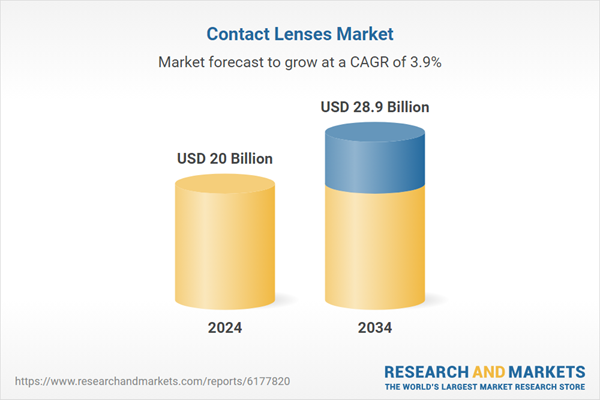The increasing global prevalence of refractive vision problems like myopia, hyperopia, and astigmatism is significantly contributing to the market’s expansion. These disorders are becoming more common, particularly among younger demographics, due to rising screen usage and decreased exposure to outdoor environments. As access to optometric care improves and diagnosis occurs earlier, more individuals are turning to contact lenses for correction. This shift is being further supported by the increasing awareness surrounding eye health and the availability of a broader range of comfortable, user-friendly lens products that suit various lifestyles.
Daily disposable lenses are gaining popularity because they offer ease of use, better hygiene, and require no maintenance or storage. These lenses are especially favored by new wearers and people with active lifestyles who want a hassle-free solution without the need for daily cleaning. With each pair designed for single-day use, the chances of irritation and eye infections are reduced. The growing preference for convenience makes them a top choice for students, professionals, and individuals who prioritize both health and time efficiency.
The soft contact lenses segment generated USD 12.3 billion in 2024. Their breathable, flexible material makes them comfortable for extended wear and suitable for users with sensitive eyes. These lenses address a variety of refractive errors such as presbyopia, astigmatism, and more, and are available in several formats - daily, bi-weekly, or monthly, allowing wearers to select options based on their lifestyle and preferences.
The vision correction segment generated USD 11.1 billion in 2024. Most users choose contact lenses to correct common visual impairments such as myopia and hyperopia. Lenses designed for vision correction help maintain optimal eye health while delivering daily visual clarity, making them the core segment of this industry.
United States Contact Lenses Market held a 73.1% share and reached USD 5.1 billion in 2024. The country’s leadership position is fueled by widespread eye care awareness, regular vision checkups, and a strong consumer base willing to invest in specialty and premium lenses. Additionally, the presence of leading manufacturers and advanced healthcare infrastructure continues to support the development and distribution of innovative lens technologies.
Key players in the Global Contact Lenses Market include SynergEyes, Contamac, Alcon Vision, Menicon, Visioneering Technologies, Shanghai Weicon Optics, Bausch+Lomb, CooperVision, Clerio Vision, SEED, Carl Zeiss Beteiligungs, Hoya Corporation, EssilorLuxottica, Johnson & Johnson Vision Care, and Blanchard Contact Lenses. Leading companies in the Contact Lenses Market are focusing on innovation in materials and lens design to improve user comfort, breathability, and extended wear performance. Many are expanding product lines to include specialty lenses for presbyopia and astigmatism while investing in daily disposable formats that meet evolving consumer demand. Strategic collaborations with eye care professionals and retailers help manufacturers increase distribution efficiency and market reach. Firms are also embracing sustainability by developing eco-conscious packaging and recyclable lens materials.
Comprehensive Market Analysis and Forecast
- Industry trends, key growth drivers, challenges, future opportunities, and regulatory landscape
- Competitive landscape with Porter’s Five Forces and PESTEL analysis
- Market size, segmentation, and regional forecasts
- In-depth company profiles, business strategies, financial insights, and SWOT analysis
This product will be delivered within 2-4 business days.
Table of Contents
Companies Mentioned
The companies profiled in this Contact Lenses market report include:- Alcon vision
- Bausch+Lomb
- Blanchard Contact Lenses
- Carl Zeiss Beteiligungs
- Clerio Vision
- Contamac
- CooperVision
- EssilorLuxottica
- Hoya Corporation
- Johnson & Johnson Vision Care
- Menicon
- SEED
- Shanghai Weicon Optics
- SynergEyes
- Visioneering Technologies
Table Information
| Report Attribute | Details |
|---|---|
| No. of Pages | 250 |
| Published | September 2025 |
| Forecast Period | 2024 - 2034 |
| Estimated Market Value ( USD | $ 20 Billion |
| Forecasted Market Value ( USD | $ 28.9 Billion |
| Compound Annual Growth Rate | 3.9% |
| Regions Covered | Global |
| No. of Companies Mentioned | 16 |









